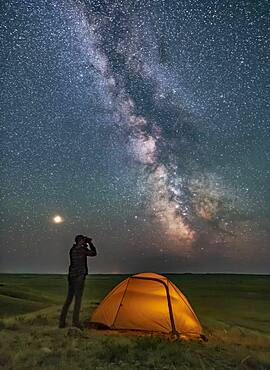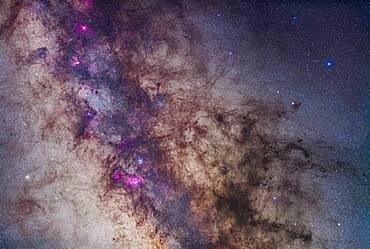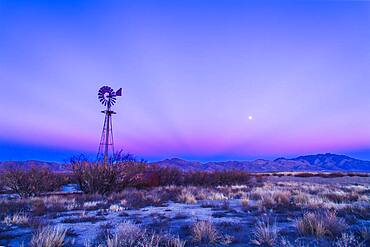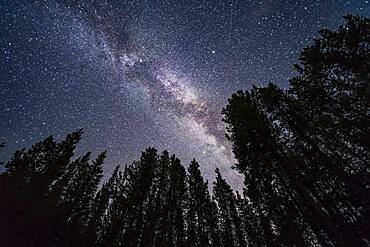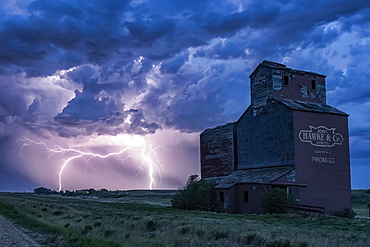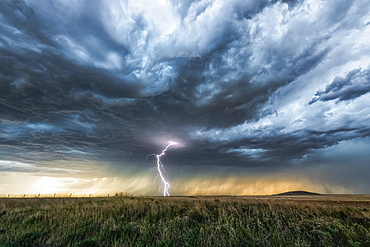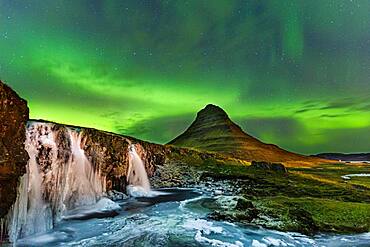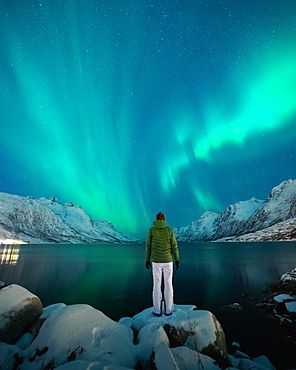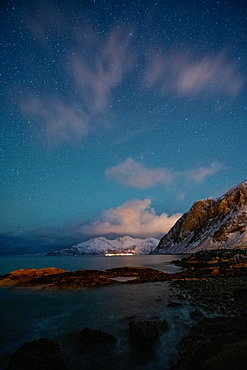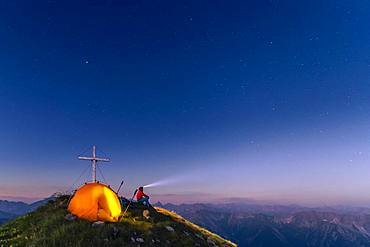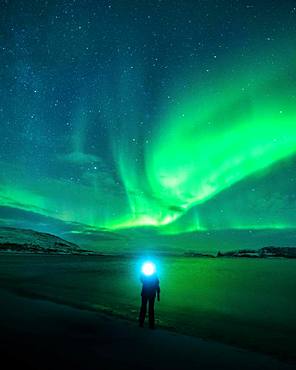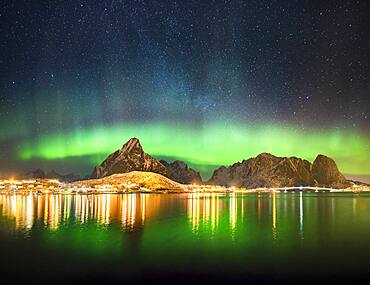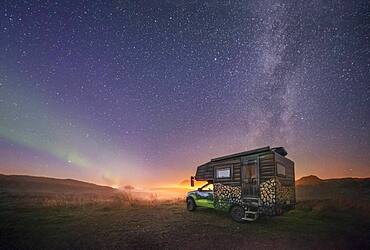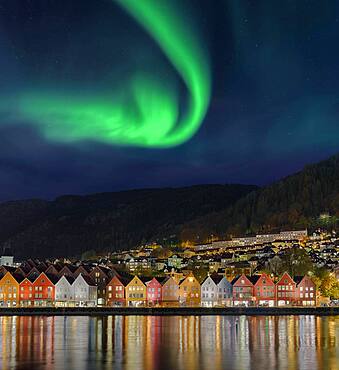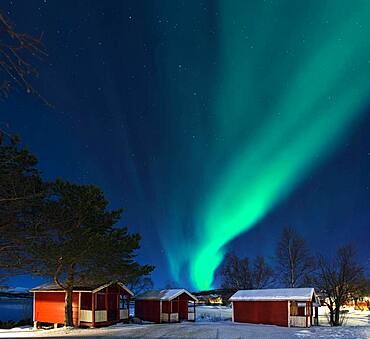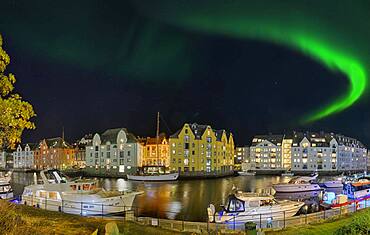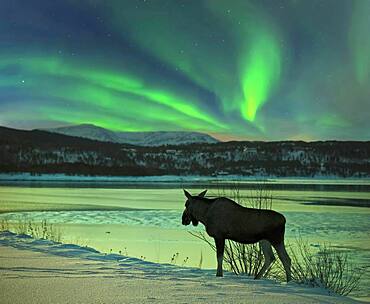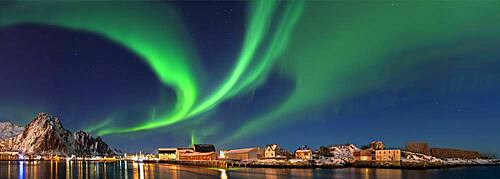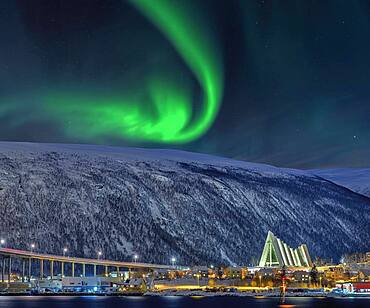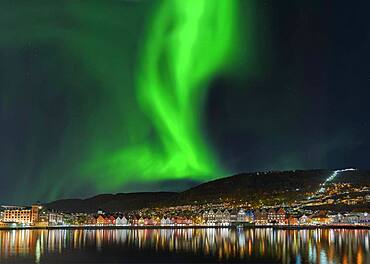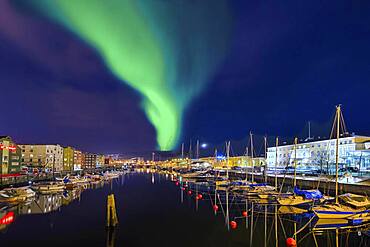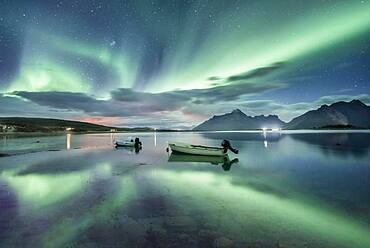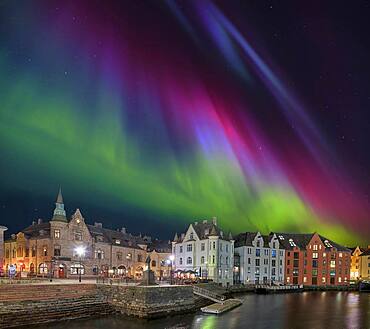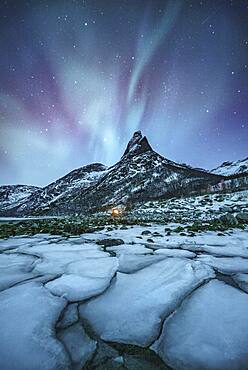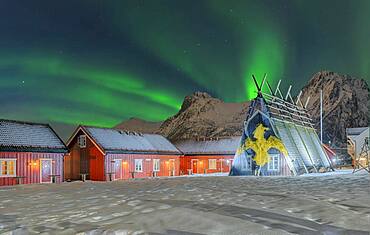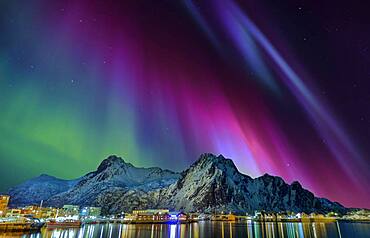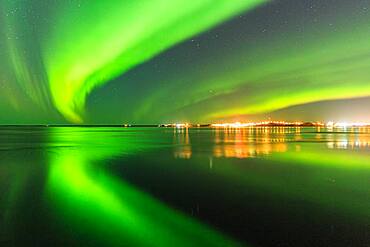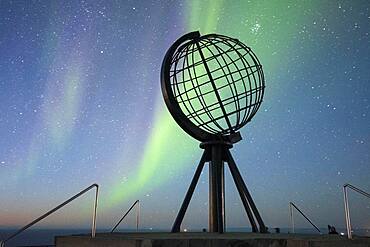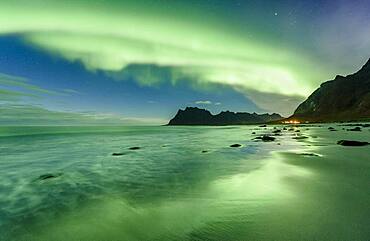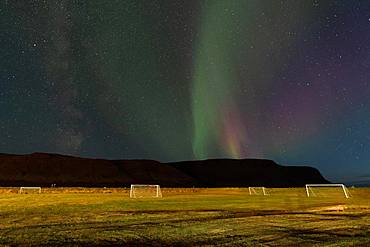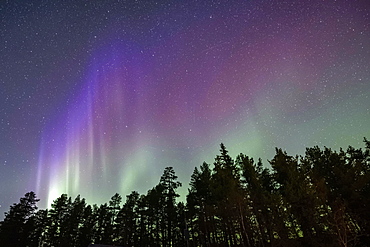Recent searches
Loading...
1350-77 - The Full Moon rising on December 22, 2018, the day after the winter solstice, in a perfectly clear sky and over the distant horizon to the northeast over the snow-covered prairie. Some cows are grazing at left! The top edge of the Moon has a green rim and the bottom edge a red rim, from atmospheric refraction. But it made for a Christmas-coloured Moon ornament on the horizon! The dark lunar mare and even the bright rays splashing from Tycho at bottom are visible.
1350-151 - A Perseid meteor streaks down the Milky Way over the Saskatchewan Summer Star Party in the Cypress Hills of southwest Saskatchewan, at Cypress Hills Interprovincial Park, a Dark Sky Preserve. The Milky Way shines to the south. About 350 stargazers attend the SSSP every year.
1350-89 - The Horsehead Nebula, B33, below the Belt of Orion and the star Alnitak, along with the bright Flame Nebula, NGC 2024, to the left of Alnitak. Many other bright reflection nebulas populate the field, such as NGC 2023 just left of the Horsehead itself. The quintuple star system Sigma Orionis is right of the Horsehead. The dark Horsehead is set against the bright streak of the emission nebula IC 434.
1350-128 - A mosaic of the rich region in Sagittarius and southern Serpens, from the Small Sagittarius Starcloud (Messier 24) at bottom to Messier 16, the Eagle Nebula, at top, with a fainter nebula above it around the cluster NGC 6604. At centre is the Swan or Omega Nebula, Messier 17. The dark nebula below centre is Barnard 92.
1350-45 - This is the central area of Cygnus and its bright Milky Way starcloud surrounded by red nebulosity. At left is the star Sadr (gamma Cygni) with the complex of nebulosity catalogued as IC 1318. At centre is the distinct Crescent Nebula, NGC 6888, a expanding nebula created by winds from a hot Wolf-Rayet star. At bottom left is the star cluster Messier 29, though looking a little lost in the rich starfields here. At top is the cluster IC 1311, looking more obvious than M29 but not observed visually and included in the NGC catalog. Odd. At far right are the large and loose star clusters NGC 6883 and NGC 6871, the latter an obvious binocular sight. To the left of Sadr is the small cluster NGC 6910. The dark nebulas B145 and LDN 862 are at right. The small emission nebula at bottom is Sharpless 2-104.
1350-100 - A dim aurora to the north at Grasslands National Park, Saskatchewan, at the Larson Ranch site and its rustic pioneer cabins. Taken August 8, 2016. This is looking northeast to Andromeda (the Andromeda Galaxy is above centre) and Perseus (the Double Cluster is left of centre). This Park is a Dark Sky Preserve. There are no lights visible. Illumination here is from starlight and the setting waxing crescent Moon to the southwest.
1350-36 - Sunset clouds and colours on December 3, 2013 from Massai Point, Chiricahua National Monument, Arizona. This is a 7-frame HDR High Dynamic Range stack to compress the high contrast from the bright sky and dark foreground into one image. Combined with Photomatix Pro. Taken with the Canon 5D MkIi and Canon 24mm lens at f/8. From images _MG_6996_6997_6998_6999_7000_7001_7002 taken at 2/3rd stop increments.
1350-133 - The amazing area of the southern Milky Way in Carina and Crux, the brightest part of the Milky Way after the galactic core region. At right is the Carina Nebula, with the Southern Pleiades cluster, IC 2602, below it. The Football Cluster, NGC 3532, is at upper left of the Carina Nebula. At centre is the region of Lambda Centauri, with the star cluster NGC 3766, the Pearl Cluster, above the emission nebulosity. At left is the Southern Cross, with the dark Coal Sack at bottom left of the Cross, with thin tendrils extending to the right. To the left of Alpha Cruxis at the bottom of the Cross is the star cluster NGC 4609; aboive Alpha is NGC 4649. To the left of Beta Cruxis at the left side of the Cross is the Jewel Box Cluster, NGC 4755.
1350-175 - Cygnus or the Northern Cross is setting amid the pine trees at Athabasca Falls in Jasper National Park, on a late October night. Cepheus is above and the bright star Vega is low and just above the trees. Deneb is at centre, as is the dark nebula Lynds 3, the Funnel Cloud Nebula. Light cloud adds the natural star glows but also discolours the sky near the horizon.
1350-10 - The colourful region around yellow Antares (bottom) in Scorpius and blue Rho Ophiuchi (top) in Ophiuchus. The nebulas are largely reflection nebulas, taking on the colour of the stars embedded in the nebulas. However, the field also contains a lot of emission nebulosity, hydrogen gas glowing red and magenta. Plus there are fingers of brown dark dusty nebulosity. It is one of the most colourful regions of the sky.
1350-176 - The Dark Emu of aboriginal sky lore rising in a moonlit sky over the Tasman Sea from a beach near Lakes Entrance, Victoria, Australia, April 2, 2017. Lights from fishing boats dot the horizon out at sea. Illumination is from the waxing crescent Moon behind the camera to the north. This is looking southeast. Crux, the Southern Cross, is at top; the Pointer Stars are below.
1350-157 - A Park interpreter poses for a scene in Grasslands National Park, Saskatchewan, of stargazing with binoculars under the Milky Way on a dark moonless night. Grasslands is perfect for stargazing as it is a Dark Sky Preserve and the horizon is vast and unobstructed.
1350-59 - A wide-angle view of the Northern Hemisphere autumn Milky, from Aquila at bottom right in thw south, to Cassiopeia and Perseus at upper left in the northeast. Cygnus is at centre overhead on a late October evening. The Summer Triangle stars are at centre and right; the Andromeda Galaxy and Triangulum galaxies are at bottom left. The dark nebula Le Gentil 3, aka the Funnel Nebula, is at centre.
1350-148 - An observer gazes skyward with his Dobsonian reflector telescope at the Saskatchewan Summer Star Party on August 9, 2018, in the Cypress Hills of southwest Saskatchewan, at the Cypress Hills Interprovincial Park, a Dark Sky Preserve. The Milky Way shines to the south. Smoke in the sky obscures the horizon somewhat.
1350-58 - This is the nebula rich region in the constellation of Monoceros the Unicorn with the dark Cone Nebula (left of centre) and the small V-shaped and bright Hubble's Variable Nebula at bottom, a reflection nebula that varies in form and brightness. Above the Cone Nebula is the triangular Christmas Tree Cluster, NGC 2264, here upside down as the bright blue star 15 Mon is the base of the tree. The large region of nebulosity is Sharpless 2-273. The V-shaped dark nebula above centre is LDN 1603.
1350-1970 - An endless road leads to the mountains, while storm clouds form in the sky. Yukon Territory, Canada
1350-98 - The partial solar eclipse of October 23, 2014 as seen from Jasper, Alberta, at a public event in Centennial Park as part of the annual Dark Sky Festival. This is a single-exposure image showing the scene near mid-eclipse with telescopes from volunteers from the Royal Astronomical Society of Canada, and the mostly clear skies above with the crescent Sun visible through the handheld polymer solar filter.
1350-35 - A mosaic of the region around the Small Sagittarius Starcloud and Dark Horse dark nebula complex. The field takes in the Milky Way from the Lagoon Nebula at bottom to the Eagle Nebula at top left. In between from top to bottom are the Swan Nebula (M17), and the Small Sagittarius Starcloud (M24). Flanking the bright M24 starcloud are the large open clusters M23 (right) and M25 (left). At bottom left is the M22 globular star cluster. The prominent dark nebula at right is the large Pipe Nebula (B78) with the small Snake Nebula (B72) above it. The whole complex is visible to the naked eye as the Dark Horse.
1350-110 - Mars (at top) and Saturn (at left) in Scorpius (or thereabouts - Saturn is technically in Ophiuchus) above Antares and the dark and reflection nebulas around Antares. The globular M4 is visible to the right of Antares.
1350-26 - Sunset twilight colours and the waxing gibbous Moon over the Chiricahua Mountains in southeast Arizona, south of Willcox. Taken December 15, 2013 on Highway 186. Taken with the 24mm lens and Canon 5D MkII. Some dark crepuscular rays are visible converging to the anti-solar point.
1350-47 - This is the Belt of Orion with its three blue stars across the top of the frame (L to R: Alnitak, Alnilam, and Mintaka), with the iconic Horsehead Nebula (aka B33) below Alnitak, with the dark Horsehead set against the bright nebula IC 434, aka Orion's Dagger. The pinkish nebula above Alnitak is NGC 2024, the Flame Nebula. The small blue reflection nebula left of the Horsehead is NGC 2023, with smaller IC 435 to the left of it. The field is filled with the large open cluster Collinder 70. The multiple star at bottom left of centre is Sigma Orionis. Many other smaller bits of reflection nebulas populate the field in and around the Belt.
1350-12 - A mosaic of the region around the centre of the Milky Way in Sagittarius and Scorpius. The field takes in the Milky Way from the Cat's Paw Nebula at bottom edge to the Eagle Nebula at top left. In between from top to bottom are the Swan Nebula (M17), the Small Sagittarius Starcloud (M24), the Trifid and Lagoon Nebulas (M20 and M8) and the open clusters M6 and M7. The prominent dark nebula at right is the large Pipe Nebula (B78) with the small Snake Nebula (B72) above it. The whole complex is visible to the naked eye as the Dark Horse.
1350-34 - All of Scorpius, plus parts of Lupus and Ara regions of the southern Milky Way. This area was directly overhead when I took this at about 4:30 am local time on April 6, 2014 from near Coonabarabran, Australia. The head of Scorpius is at top his tail at bottom though you could turn this image any direction and it would be correct as seen in the sky at this latitude, depending on the time of night. But in portrait mode like this north is at top. Along the Milky Way are numerous nebulas, including the False Comet area, the Cat's Paw area, and the colourful nebulas around Antares at top. The dark Pipe Nebula is at left of frame.
1350-13 - The centre of the galaxy area of the Milky Way toward Sagittarius and Scorpius, with the Sagittarius Starcloud right of centre, and the Lagoon Nebula (M8) left of centre. The Cat's Paw Nebula (NGC 6334) in Scorpius is at upper right, the Swan Nebula (M17) and Eagle Nebula (M16) are at lower left. To the right of them is the Small Sagittarius Starcloud (M24). At the very top is the Snake Nebula (B72). The main mass of dark nebula is the Pipe Nebula (B78). Above M24 at left is the open cluster M23 while below the M24 star cloud is the cluster M25. The globular M22 is at the bottom edge. At right of frame are the open clusters M6 (in the dark area of the Milky Way) and M7 (in the bright starcloud).
1350-174 - The waxing crescent Moon setting over a nearby farm, on June 26, 2017. Shot at the start of a time-lapse sequence, and shot in haste from home as the Moon appeared from beneath an otherwise very cloudy sky. The dark side of the Moon is lit by Earthshine, prominent despite the Moon's low altitude and bright twilight sky.
1350-102 - The Big Dipper in hazy clouds over the Waterton River at Maskinonge Pond, September 23, 2016, taken at the Night Photography Workshop I conducted there that night. The glow at right is light pollution from the Shell Waterton Gas Plant and from Pincher Creek to the north.
1350-170 - The summer Milky Way overhead and through the Summer Triangle stars in July, looking up through trees in Banff National Park at Herbert Lake. Deneb is at top left, Vega at top right, and Altair is at bottom. The bright Cygnus star cloud is obvious. As are the dark lanes in the Milky Way, including the Funnel Nebula at top, aka Le Gentil 3.
1350-11 - The Belt of Orion with the Horsehead Nebula at botton, the dark nebula set in the bright emission nebula IC 434. The nebula at left of the Zeta Orionis (aka Alnitak) is the Flame Nebula, NGC 2024. The reflection nebula at upper left is the M78 complex with NGC 2071. The other Belt stars are Alnilan (centre) and Mintaka (upper right). The field contains a wealth of other blue reflection and red emission nebulas.
1350-156 - A Park interpreter poses for a scene in Grasslands National Park, Saskatchewan, of stargazing with binoculars under the Milky Way on a dark moonless night. Grasslands is perfect for stargazing as it is a Dark Sky Preserve and the horizon is vast and unobstructed.
1178-31794 - USA, South Carolina, Mount Pleasant, Arthur Ravenel Jr Bridge illuminated at night
1116-50102 - Storm cloud formations over farmland with a wind farm and turbines in the distance; United States of America
1116-50105 - Supercell over the prairies and a dirt road, with sunlight illuminating the dramatic sky; Tulsa, Oklahoma, United States of America
1116-50279 - Old caboose at nighttime under a bright, starry sky; Coderre, Saskatchewan, Canada
1116-50278 - Dark storm clouds over railroad tracks in a field with rain falling in the distance; Marquis, Saskatchewan, Canada
1116-50103 - Supercell over the prairies and a dirt road, with sunlight illuminating the dramatic sky; Tulsa, Oklahoma, United States of America
1116-50220 - Grain elevator in a dramatic thunderstorm with dark clouds and lightning strikes in the distance; Saskatchewan, Canada
1116-50193 - Lightning strike on the horizon during an electrical storm on the prairies; Saskatchewan, Canada
832-390826 - View of Mount Cook and Mount Tasman with starry sky and Milky Way, reflection in Lake Matheson, Westland National Park, New Zealand Alps, West Coast Region, South Island, New Zealand, Oceania
832-391068 - Milky Way over Grand Pier in Teignmouth, Devon, England, United Kingdom, Europe
832-390748 - Man with scythe under tree with starry sky, Oberguenzburg, Ostallgaeu, Bavaria, Germany, Europe
832-390749 - Man with scythe under tree with starry sky, Oberguenzburg, Ostallgaeu, Bavaria, Germany, Europe
1113-105268 - Sunset in bad weather at Lake Starnberg, Bavaria, Germany
1336-185 - Sunset light on a rocky mountain and dark clouds in the sky, Chefchaouen, Morocco, North Africa, Africa
832-389919 - Stars in the sky above a tree, Goldenstedter Moor, night, Milky Way, Germany, Europe
832-389924 - Stars in the sky above a tree, Goldenstedter Moor, night, Milky Way, Germany, Europe
832-389918 - Stars in the sky above a tree, Goldenstedter Moor, night, Milky Way, Germany, Europe
1336-88 - Yangshuo mountains with dark clouds framed by hills, Yangshuo, Guangxi, China, Asia
1336-89 - Long exposure of Yangshuo mountains with dark clouds, Yangshuo, Guangxi, China, Asia
1200-375 - View from Curbar Edge looking towards Baslow Edge, Curbar Gap, Dark Peak, Peak District National Park, Derbyshire, England, United Kingdom, Europe
1113-104099 - Camel Train in Timanfaya National Park, Lanzarote, Canary Islands, Spain
1113-103027 - Mountain bike tour, MTB, in Pillersee valley, St. Ulrich am Pillersee, Tirol, Austria, Europe
832-389795 - Aurora Borealis, Kirkjufellsfoss with Mount Kirjufell, Snaefellsnes Peninsula, Iceland, Europe
832-389742 - Night sky with stars and milky way over Lechtal mountains, in the foreground summit cross of the Geierkopf with tent, Reutte, Ammergau Alps, Tyrol, Austria, Europe
832-389741 - Mountaineer on summit ridge with full moon and starry sky, in the background Ammergau Alps, Reutte, Ammergau Alps, Tyrol, Austria, Europe
832-389643 - Flakstad beach with northern lights, Flakstad, Lofoten, Norway, Europe
832-389480 - Northern lights over a Norwegian fjord with man in green jacket, Tromso, Norway, Europe
832-389483 - Northern lights over a Norwegian fjord, Tromso, Norway, Europe
832-389511 - Starry sky summit of Kreuzspitze and tent, Lechtal Alps in the background, Elmen, Lechtal Alps, Ausserfern, Tyrol, Austria, Europe
832-389481 - Northern lights over a Norwegian fjord with woman in red jacket, Tromso, Norway, Europe
832-389508 - Cross of the Kreuzspitze by a starry sky with tent and mountaineer at the summit, in the background the Lechtal Alps, Elmen, Lechtal Alps, Ausserfern, Tyrol, Austria, Europe
832-389482 - Northern lights over a Norwegian fjord with person and headlamp, Tromso, Norway, Europe
832-389171 - Northern lights at the fjord above the fishing village Reine, Moskenes, Nordland, Lofoten, Norway, Europe
832-389209 - Mountain peak (Aurora borealis) Stetind, arctic winter landscape, night view, starry sky, northern lights Northern Lights, Stetinden, Nordland, Norway, Europe
832-389158 - Northern lights in front of a starry sky, Digermulen, Nordland, Lofoten, Norway, Europe
832-389201 - Northern Lights Bakklandet historical warehouses Trondheim Norway
832-389205 - Northern Lights in Pure Historic Fishing Lofoten Norway
832-389154 - Night shot of a painted camper van under the Milky Way with northern lights, Gimsoy, Lofoten, Nordland, Norway, Europe
832-389195 - B Bryggen Northern LightsBergen City Norway
832-389198 - Northern lights Hamaroy lighthouse in Norway
832-389203 - Arctic Sea Cathedral Winter Northern Lights Tromso Norway
832-389290 - Yurt of eagle hunter Bashakhan Spai at night, starry sky over Kisil Char, Olgii, Mongolia, Asia
832-389194 - Northern lights camping cabins Tysjford Norway
832-389199 - Alsesund harbour panorama northern lights Norway
832-389196 - B Bryggen Northern LightsBergen City Norway
832-389193 - Moose at Tysfjord with northern lights in Norway
832-389207 - Northern lights in Svolva Panorama Lofoten Norway
832-389204 - Bridge at the Fjord Arctic Ocean Cathedral Winter Northern Lights Tromso Norway
832-389197 - Northern lights in the city of Bergen Norway
832-389208 - Small (Aurora borealis) motorboats anchoring in a bay, night view, starry sky, northern lights Northern Lights, Straumen, Nordland, Norway, Europe
832-389200 - Alsesund Port Northern Lights Norway
832-389210 - Mountain peak (Aurora borealis) Stetind, arctic winter landscape, night view, starry sky, northern lights Northern Lights, in front ice floes, Stetinden, Nordland, Norway, Europe
832-389165 - Deep snowy winter landscape by the sea, wooden cabin with warm light on the coast, behind mountains under starry sky, Kleppstad, Nordland, Lofoten, Norway, Europe
832-389206 - Northern Lights Historic fisherman's cottages Svolva Lofoten Norway
832-389191 - Northern lights in Svolvaer Lofoten Norway
832-388969 - Northern Lights near Borganes, Borgarfjoerour, Vesturland, Iceland, Europe
832-388746 - Northern lights over the sea and snow-covered mountains, Vesteralen, Nordland, Norway, Europe
832-388735 - North Cape Visitor Centre with Northern Lights, Finnmark, Norway, Europe
832-388822 - Man with flashlight at Oak (Quercus) on the Roethelberg with starry sky at night, tree, silhouette, Hohen-Demzin, Mecklenburg-Western Pomerania, Germany, Europe
832-388734 - Steel globe at North Cape with northern lights, Finnmark, Norway, Europe
832-388784 - Northern lights at Uttakleiv Beach, Leknes, Lofoten, Nordland, Norway, Europe
832-388625 - Northern Lights above the football field of the village of Talknafjoerour, Talknafjoerour, Westfjords, Northwest Iceland, Iceland, Europe
832-388544 - Kazakh yurt under milky way. Bayan-Ulgii province. Mongolia
832-388542 - Camel herder under beautiful milky way in Mongolian gobi desert, Umnugobi province, Mongolia, Asia
832-388335 - Northern Lights over Arnarfjoerour, Northwest Iceland, Iceland, Europe
832-388125 - Northern lights over church and cemetery, Hvammstangi, Westfjords, Northwest Iceland, Iceland, Europe
832-388109 - Northern Lights (Aurora borealis), Latravik Bay, near Latrabjarg, Westfjords, Iceland, Europe
832-388078 - Northern Lights (Aurora borealis), Haukland Beach, Lofoten, Norway, Europe
832-388159 - Northern lights over northern forest, Jokkmokk, Norrbottens laen, Sweden, Europe











